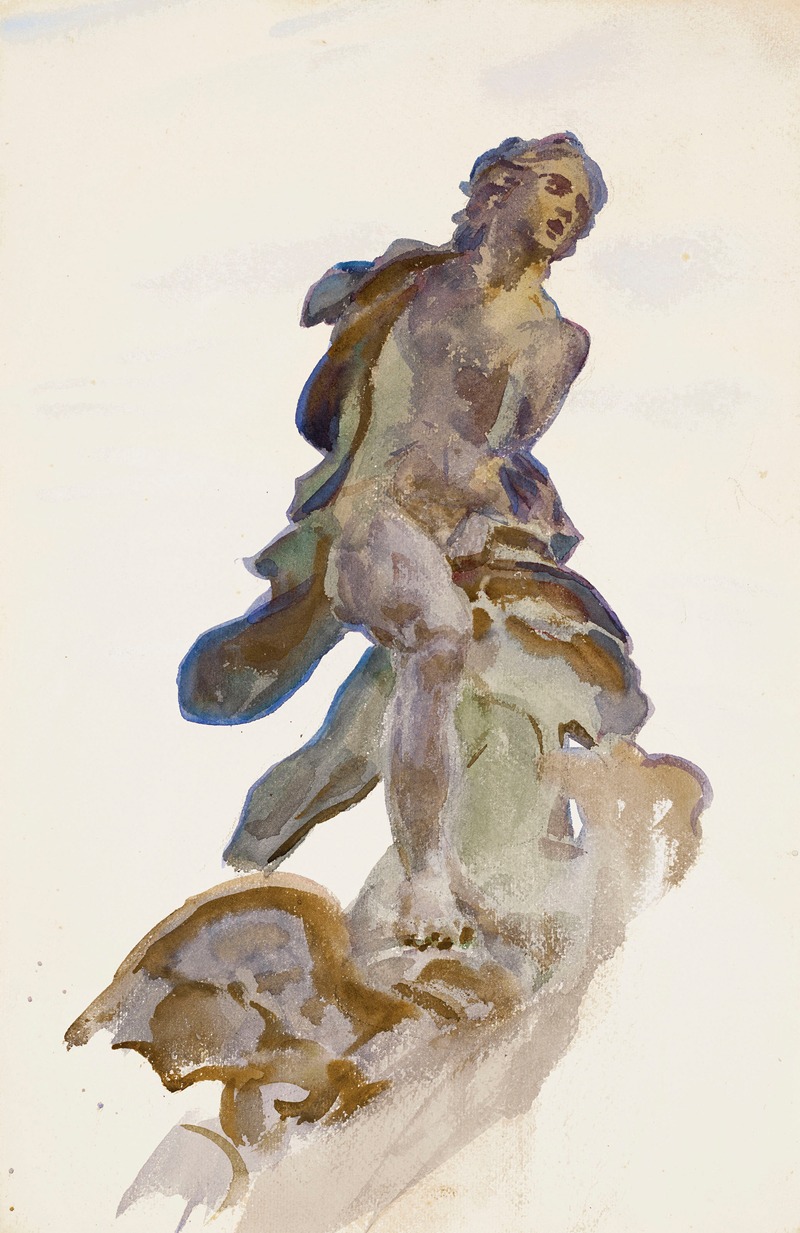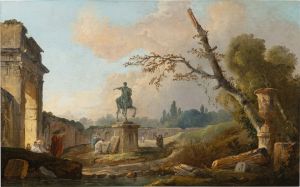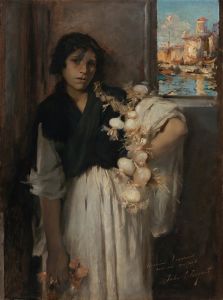
A Statue in Rome
A hand-painted replica of John Singer Sargent’s masterpiece A Statue in Rome, meticulously crafted by professional artists to capture the true essence of the original. Each piece is created with museum-quality canvas and rare mineral pigments, carefully painted by experienced artists with delicate brushstrokes and rich, layered colors to perfectly recreate the texture of the original artwork. Unlike machine-printed reproductions, this hand-painted version brings the painting to life, infused with the artist’s emotions and skill in every stroke. Whether for personal collection or home decoration, it instantly elevates the artistic atmosphere of any space.
John Singer Sargent, an American expatriate artist renowned for his portraits, landscapes, and watercolors, created the painting "A Statue in Rome." While Sargent is primarily celebrated for his portraiture, he also produced a significant body of work depicting various scenes and subjects from his travels, including this particular piece.
"A Statue in Rome" is one of Sargent's works that captures his interest in the interplay of light and shadow, as well as his fascination with classical themes and architecture. The painting is believed to have been created during one of Sargent's visits to Rome, a city that inspired many artists with its rich history and abundance of classical art and architecture. Rome, with its ancient ruins, Renaissance art, and Baroque architecture, provided a fertile ground for Sargent's artistic exploration.
Sargent's technique in "A Statue in Rome" reflects his mastery of capturing the effects of light and his ability to render textures and surfaces with remarkable precision. His brushwork is often characterized by a fluidity and expressiveness that bring his subjects to life. In this painting, Sargent likely employed his keen observational skills to depict the statue and its surroundings with a sense of immediacy and vibrancy.
The painting's composition and subject matter suggest Sargent's interest in the classical world and its enduring influence on art and culture. Statues in Rome, often remnants of the city's ancient past, serve as a testament to the grandeur and artistic achievements of earlier civilizations. By choosing to paint a statue, Sargent not only showcases his technical prowess but also engages with the historical and cultural significance of his subject.
Sargent's work often blurs the line between realism and impressionism, and "A Statue in Rome" is no exception. His ability to capture the nuances of light and shadow, combined with his attention to detail, results in a painting that is both realistic and evocative. The viewer is invited to appreciate the beauty of the statue and its setting, while also contemplating the historical context that surrounds it.
While specific details about the exact statue depicted in "A Statue in Rome" are not widely documented, the painting remains an example of Sargent's skill and his ability to find inspiration in the world around him. His travels throughout Europe and his exposure to different cultures and artistic traditions enriched his work and contributed to his reputation as one of the leading artists of his time.
In summary, "A Statue in Rome" by John Singer Sargent exemplifies the artist's fascination with light, his technical skill, and his engagement with classical themes. The painting reflects Sargent's broader body of work, which encompasses a wide range of subjects and demonstrates his versatility and artistic vision.


















